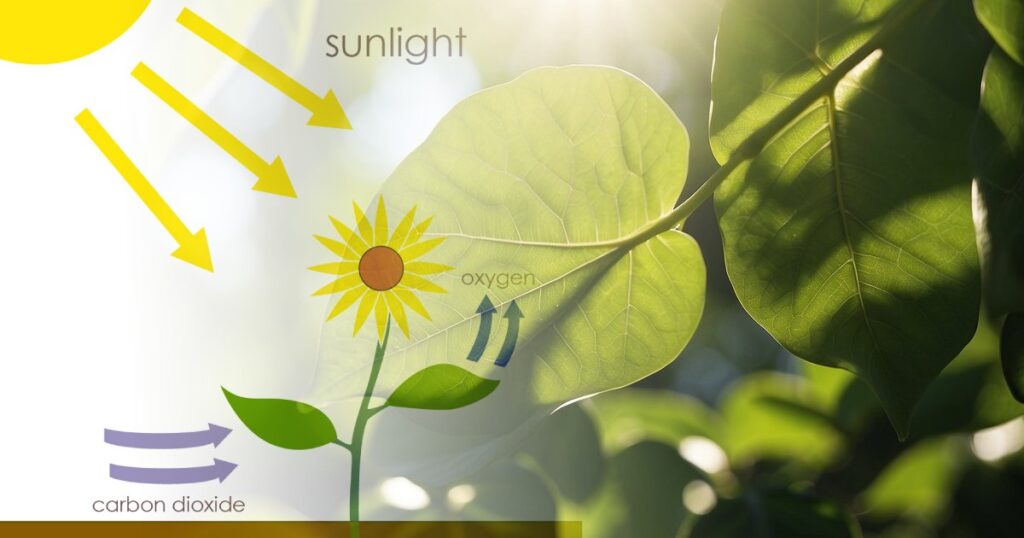Photosynthesis: The Life-Sustaining Mechanism of Nature
Photosynthesis is one of the most vital biological processes on Earth, serving as the foundation of life for nearly all ecosystems. It is the process through which plants, algae, and certain bacteria convert light energy from the sun into chemical energy stored in glucose. This energy fuels their growth and, in turn, sustains heterotrophic organisms (like humans) that depend on plants for food and oxygen. In this article, we’ll explore the mechanism of photosynthesis, its stages, and its significance to life on our planet.
What is Photosynthesis?
The term “photosynthesis” originates from Greek: photo (light) and synthesis (putting together). It is a biochemical process where organisms use sunlight, water, and carbon dioxide to produce glucose (a sugar) and oxygen. The simplified chemical equation is:
6CO₂ + 6H₂O + Light → C₆H₁₂O₆ + 6O₂
This equation highlights the transformation of inorganic molecules (CO₂ and H₂O) into organic glucose, releasing oxygen as a byproduct. Photosynthesis occurs in specialized structures called chloroplasts, primarily found in plant leaves.

Chloroplasts and Chlorophyll: The Powerhouses of Photosynthesis
Chloroplasts are membrane-bound organelles containing thylakoids (disc-like structures) stacked into grana, surrounded by a fluid called stroma. Embedded in the thylakoid membranes are pigments like chlorophyll-a, chlorophyll-b, and carotenoids. Chlorophyll-a is the primary pigment responsible for absorbing light energy, particularly in the blue and red wavelengths, while reflecting green light (giving plants their color).
The Two Stages of Photosynthesis
Photosynthesis occurs in two interconnected stages:
- Light-Dependent Reactions (occur in thylakoid membranes).
- Light-Independent Reactions (Calvin Cycle) (occur in the stroma).
Let’s break them down:
1. Light-Dependent Reactions: Capturing Solar Energy
These reactions convert light energy into chemical energy (ATP and NADPH). Here’s how it works:
- Step 1: Absorption of Light
Chlorophyll molecules in Photosystem II (PSII) absorb photons, exciting electrons to a higher energy state. - Step 2: Water Splitting (Photolysis)
The excited electrons from PSII are passed along an electron transport chain (ETC). To replace these lost electrons, water molecules are split into oxygen (O₂), protons (H⁺), and electrons. This is why plants release oxygen! - Step 3: Proton Gradient and ATP Synthesis
As electrons move through the ETC, protons are pumped into the thylakoid lumen, creating a gradient. Protons flow back into the stroma via ATP synthase, a protein that converts ADP to ATP (chemiosmosis). - Step 4: NADPH Formation
The electrons eventually reach Photosystem I (PSI), where they’re re-energized by light. These electrons, along with H⁺ ions, reduce NADP⁺ to NADPH.
Outcome: Light energy → ATP + NADPH + O₂.
2. Calvin Cycle (Light-Independent Reactions): Building Glucose
The Calvin Cycle uses ATP and NADPH from the light reactions to fix carbon dioxide into glucose. It occurs in three phases:
- Phase 1: Carbon Fixation
Enzyme RuBisCO catalyzes the attachment of CO₂ to a 5-carbon sugar, ribulose bisphosphate (RuBP), forming a 6-carbon compound that splits into two 3-phosphoglycerate (3-PGA) molecules. - Phase 2: Reduction
ATP and NADPH convert 3-PGA into glyceraldehyde-3-phosphate (G3P), a 3-carbon sugar. Some G3P molecules exit the cycle to form glucose, while others regenerate RuBP. - Phase 3: Regeneration of RuBP
Using ATP, the remaining G3P molecules are rearranged to regenerate RuBP, ensuring the cycle continues.
Outcome: CO₂ → Glucose (C₆H₁₂O₆).
Factors Affecting Photosynthesis
Several environmental factors influence the rate of photosynthesis:
- Light Intensity: Higher intensity increases the rate until a plateau is reached.
- CO₂ Concentration: Limited CO₂ slows the Calvin Cycle.
- Temperature: Enzymes like RuBisCO function optimally at 25–35°C; extreme heat denatures them.
- Water Availability: Drought closes stomata, limiting CO₂ intake.
Why is Photosynthesis Important?
- Oxygen Production: Photosynthesis generates the oxygen we breathe.
- Food Source: Glucose fuels plant growth, forming the base of food chains.
- Carbon Sink: Plants absorb CO₂, mitigating climate change.
- Energy Storage: Fossil fuels (coal, oil) are ancient stored photosynthetic energy.
Conclusion
Photosynthesis is a marvel of nature, seamlessly converting sunlight into life-sustaining energy. From the light-dependent reactions in thylakoids to the carbon-fixing Calvin Cycle, every step is finely tuned to sustain ecosystems and regulate Earth’s atmosphere. Understanding this process not only deepens our appreciation for plants but also underscores the urgency of protecting forests and reducing carbon emissions. As we face global environmental challenges, photosynthesis reminds us that life on Earth is interconnected—and it all begins with a ray of light


